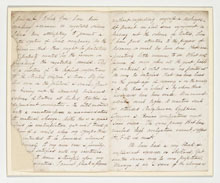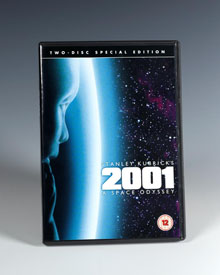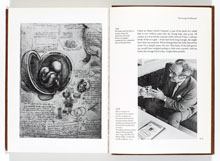The Ascent of Man

Human evolutionary tree from published lectures by the German Darwinist Ernst Haeckel. The oak looks solid, but controversially he inferred the earliest ancestors from embryos, not fossils. Lithograph from Anthropogenie oder Entwickelungsgeschichte des Menschen (1874). XIII.27.8.
Accounts of evolutionary progress from the creation of the solar system to the rise of civilization are a major publishing phenomenon of the modern age. From stars to societies, the development of the embryo has offered a model for origin stories of all kinds. Bestsellers such as Vestiges of the Natural History of Creation (1844) argued for the evolution of the cosmos based on what it called ‘the universal gestation of nature’. Charles Darwin, whose private post-Beagle notebooks began with problems in understanding sexual generation, regarded embryology as his ‘pet bit’ in the Origin of Species (1859). His disciples used parallels between the development of individuals and the development of species to draw impressive evolutionary trees. They exploited new techniques for printing illustrations to produce vivid spectacles at affordable prices. The epic of evolution continues to inspire glossy books, TV series, films and computer games.
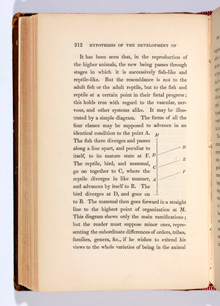
This diagram from Robert Chambers’s anonymously published Vestiges of the Natural History of Creation (1844) shows species emerging through a non-miraculous process of embryonic advance and divergence. Ant.c.48.290, p. 212
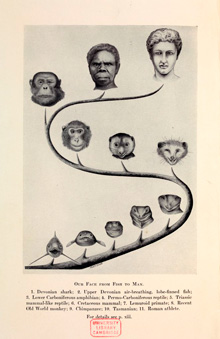
Written in the aftermath of the Scopes evolution trial in Tennessee, William K. Gregory’s Our Face from Fish to Man (1929) exploits the fascination of readers with their own faces to draw them into a sophisticated account of the development of the head of the vertebrates. 380.c.92.36, frontispiece
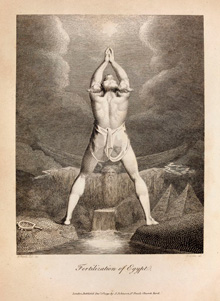
From Erasmus Darwin’s erotic poem The Botanic Garden (Part 1,1791), this copper engraving by William Blake illustrates the ‘Dog of Nile’, Anubis, barking at the six-pointed dog-star Sirius. The star’s arrival signalled the annual floods that would ensure the fertility of Egypt. CCB.47.29, plate facing p. 127
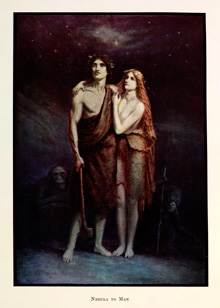
In this frontispiece to Henry Knipe’s evolutionary epic poem Nebula to Man (1905), the archetypal couple wear animal skins, but their destiny is tied to the stars. Ver.4.90.9, frontispiece
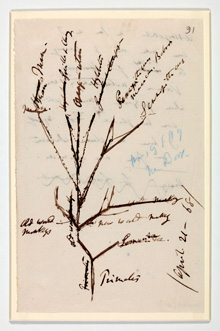
Charles Darwin rarely published explicit genealogies, but this sketch of primate origins (dated 21 April 1868) shows that he was willing to use such images in private to work out his ideas. MS DAR. 80: B91r



